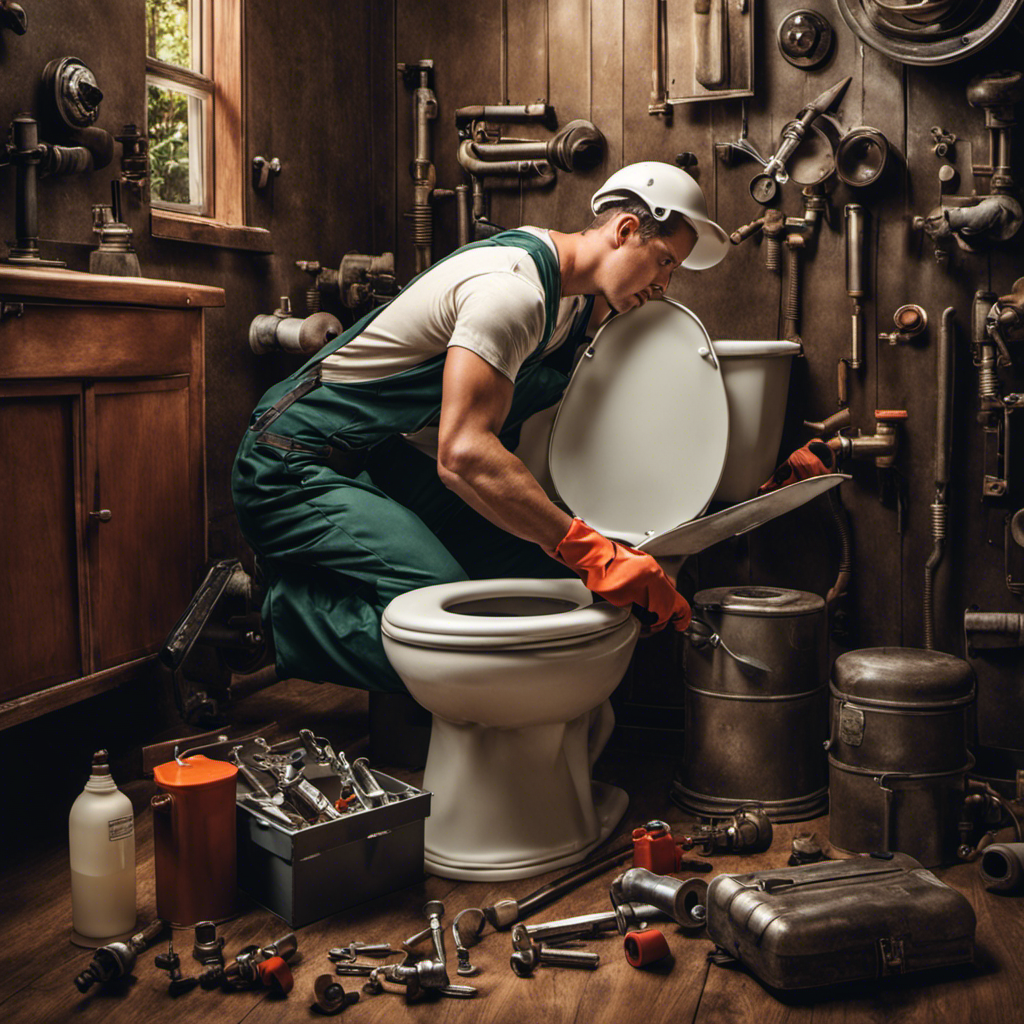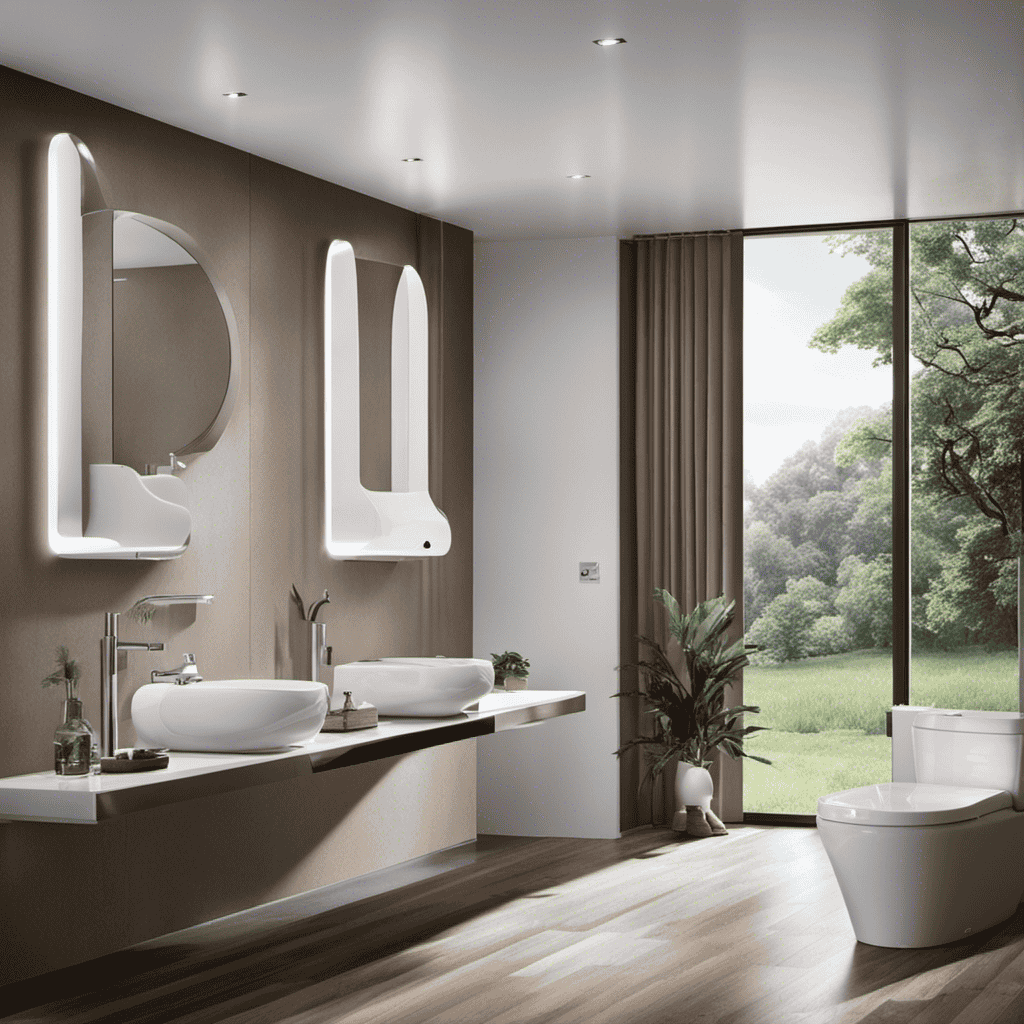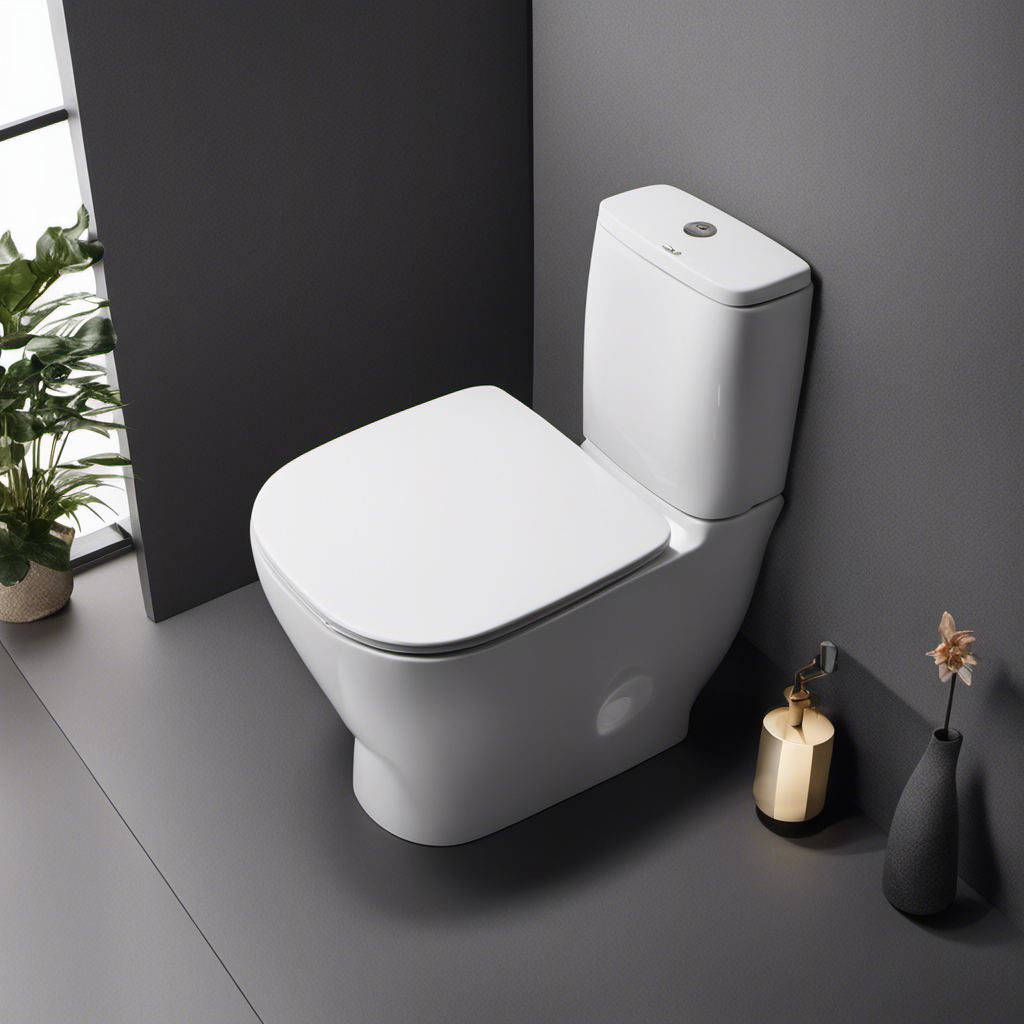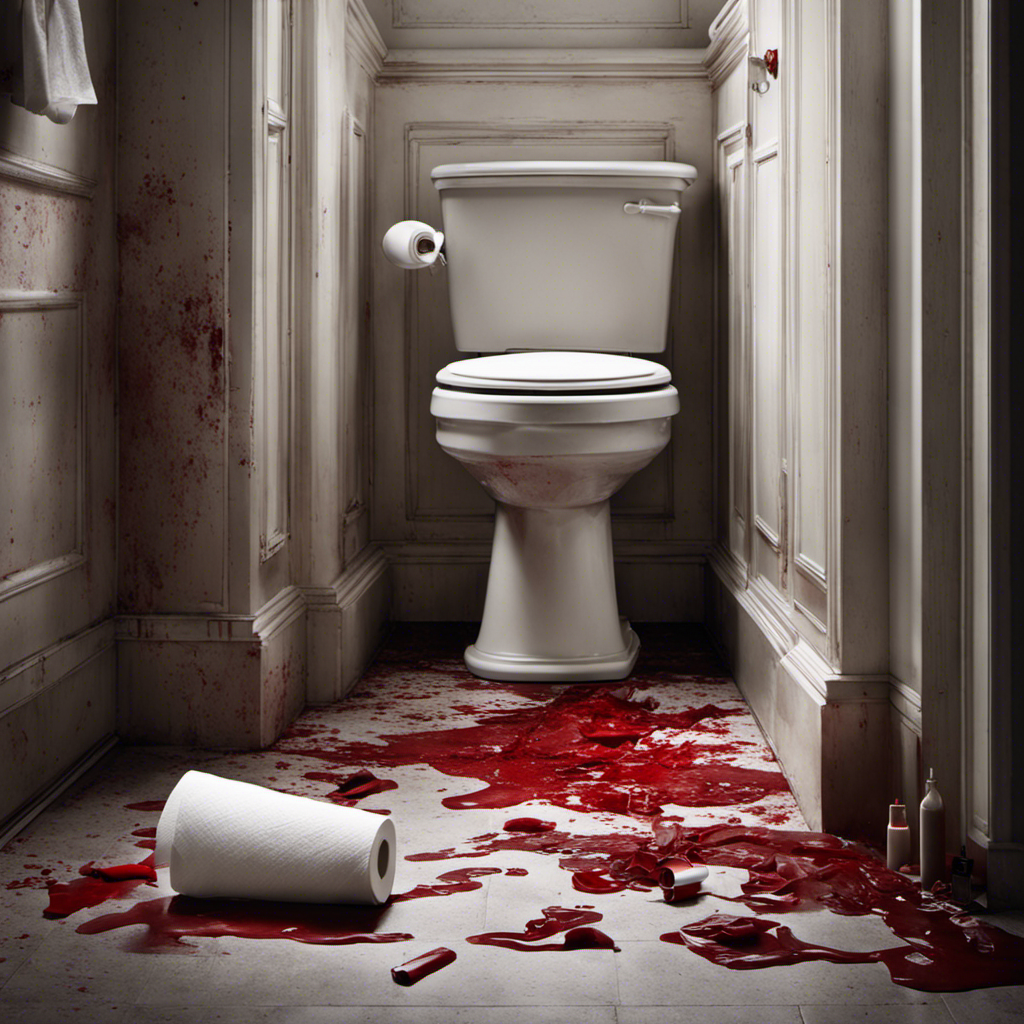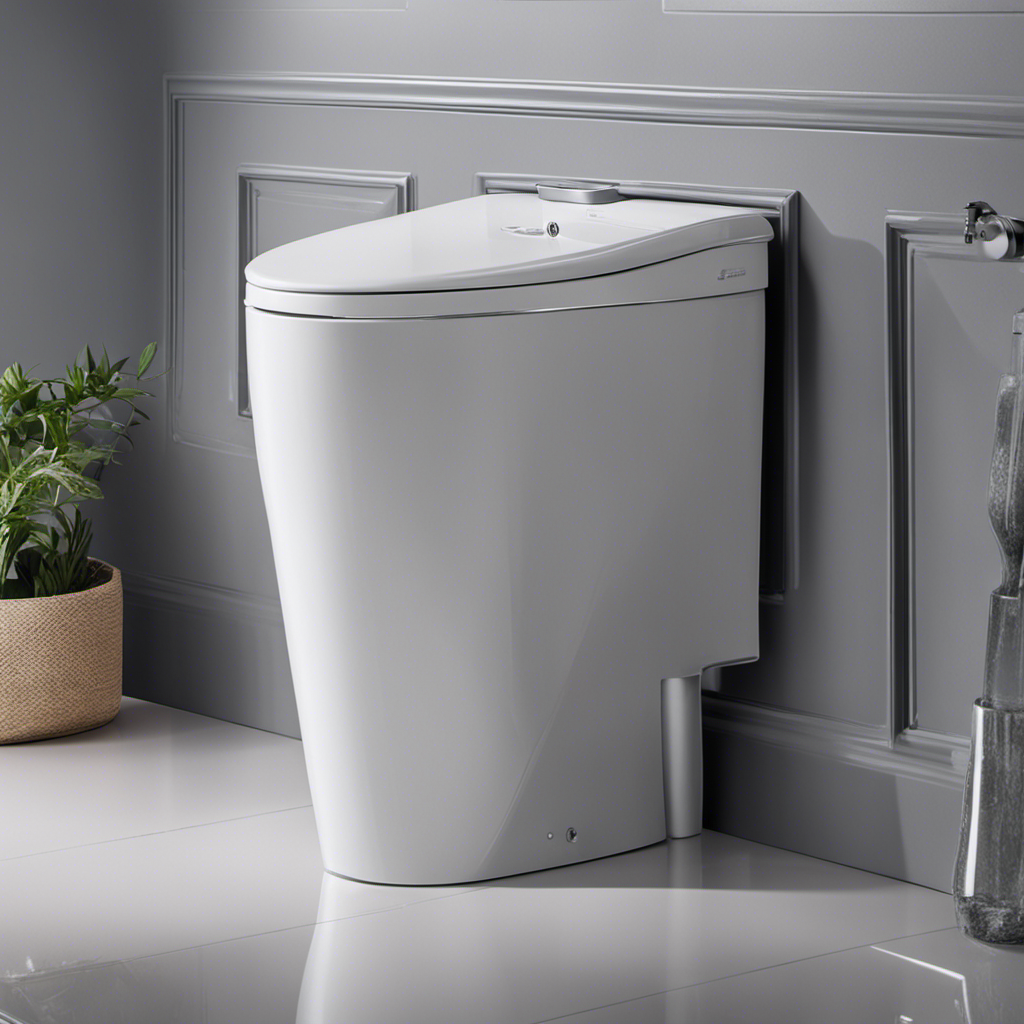As a homeowner, keeping my toilet in good working order is essential. It’s like having a reliable friend who’s always there for me. That’s why I’ve gathered a wealth of knowledge on toilet maintenance and repair.
In this article, I’ll share my expertise and provide you with practical tips and step-by-step guides to tackle common toilet issues. From unclogging stubborn blockages to installing a new toilet, I’ve got you covered.
So, let’s dive in and ensure your toilet remains a trustworthy companion for years to come.
Key Takeaways
- Regular toilet maintenance can help prevent clogs and blockages.
- Identifying and fixing toilet repairs can often be done without professional assistance.
- Proper cleaning techniques and supplies are important for maintaining a hygienic toilet.
- DIY toilet installation can save money and give you control over the process.
Common Toilet Maintenance Issues
One common toilet maintenance issue I often encounter is a running toilet that constantly wastes water. This problem can occur due to various reasons, such as toilet leak detection or improper toilet water pressure.
To detect a toilet leak, you can perform a simple test by adding food coloring to the tank and checking if it seeps into the bowl without flushing. If it does, there is a leak that needs to be fixed.
Another issue that can cause a running toilet is inadequate water pressure. To check the water pressure, you can use a pressure gauge and measure the pressure coming into the toilet. If it is too low, you may need to adjust the water supply valve or consult a professional plumber for assistance.
Fixing these issues promptly can help prevent water wastage and save you money on your water bill.
Troubleshooting Toilet Problems
I can troubleshoot common toilet problems by identifying the issue and following step-by-step guides.
When it comes to toilet flushing problems, there are a few common culprits to consider. One of the main issues is a clogged or blocked toilet. This can often be resolved by using a plunger or a toilet snake to remove the obstruction.
Another common problem is a leaky toilet, which can lead to water wastage and potential damage to your bathroom floor. Toilet leak detection is crucial in identifying the source of the leak, whether it’s a faulty fill valve, flapper, or cracked tank.
DIY Toilet Repairs
By following the step-by-step guides provided, you can easily tackle common issues with your toilet and save money on professional assistance.
When it comes to DIY toilet repairs, having the right tools is crucial. Some essential toilet repair tools include a plunger, toilet snake, adjustable wrench, and a screwdriver. These tools will help you troubleshoot and fix various toilet problems.
For example, if your toilet is clogged, a plunger can help dislodge the blockage. If the clog is more stubborn, a toilet snake can be used to break it up. If you’re experiencing a leak, you may need to use an adjustable wrench to tighten or replace the faulty parts.
With these toilet repair tools and troubleshooting techniques, you can confidently handle most toilet repairs on your own.
Essential Toilet Cleaning Tips
Using mild soap and water, I clean the exterior of my toilet regularly to maintain its cleanliness and hygiene. However, proper toilet cleaning goes beyond just surface brushing.
To ensure a thorough and effective cleaning routine, it is important to pay attention to the interior as well. When it comes to cleaning the toilet bowl, it is essential to choose cleaning supplies and detergents that won’t damage the porcelain. Additionally, eco-friendly cleaning products are a great option as they are gentle on the environment.
To remove stubborn toilet stains, there are various natural and eco-friendly methods you can try. For example, using a mixture of baking soda and vinegar or lemon juice can help break down and remove tough stains.
Step-by-Step Toilet Installation Guide
Following the step-by-step toilet installation guide, I successfully installed a new toilet without any extra cost. The key to a successful installation is avoiding common toilet installation mistakes and choosing the right toilet model.
One common mistake is not properly measuring the rough-in, which is the distance between the wall and the center of the drainpipe. This measurement is crucial for a proper fit. Another mistake is not ensuring a secure seal between the toilet and the floor. This can lead to leaks and instability.
When choosing a toilet model, consider factors such as the bowl shape, flushing mechanism, and water efficiency. It’s important to select a toilet that suits your needs and preferences.
Accurate Toilet Measurement Techniques
I found that accurate toilet measurement techniques are essential when replacing parts and avoiding the hassle of returning incorrect ones. To ensure precise measurements, it is important to use the right toilet measurement tools and follow proper procedures.
Here are four important steps to consider when measuring toilet dimensions:
-
Use a tape measure: Measure the distance from the wall to the center of the toilet flange, as this will determine the rough-in size.
-
Measure the tank: Measure the width, depth, and height of the tank to ensure a proper fit for replacement parts such as flush valves or fill valves.
-
Measure the bowl: Measure the width, depth, and height of the bowl to determine the correct size for a new toilet seat or wax ring.
-
Check for clearance: Measure the distance between the toilet and nearby objects, such as walls or cabinets, to ensure adequate clearance for installation.
Frequently Asked Questions
How Often Should I Clean My Toilet to Prevent Stains and Keep It Hygienic?
I clean my toilet at least once a week to prevent stains and maintain hygiene. I use mild soap and water for the exterior and a toilet bowl cleaner for the interior.
What Type of Plunger Should I Use for a Clogged Toilet?
I always make sure to have the right plunger for a clogged toilet. It’s important to choose one that matches the size and shape of the drain. This helps ensure effective and efficient maintenance.
How Do I Know if I Need to Replace the Fill Valve in My Toilet?
If I’m experiencing issues with my toilet’s fill valve, such as the tank not filling properly or water continuously running, it may be time to replace the fill valve. Regular toilet tank maintenance can help prevent these problems.
Can I Install a Bidet on My Existing Toilet?
Yes, you can install a bidet on your existing toilet. It offers various benefits like improved hygiene and comfort. Follow the installation instructions carefully and make sure to choose a bidet that is compatible with your toilet.
How Do I Measure the Size of My Toilet Seat to Ensure a Proper Fit?
To measure the size of your toilet seat for a proper fit, start by measuring the distance between the mounting holes. This will determine the compatibility of seat options. Consider the shape and dimensions of your toilet bowl when selecting a new seat.
Conclusion
In conclusion, toilet maintenance and repair is an incredibly intricate and complex process that requires utmost attention to detail. From dealing with common issues like clogs and blockages to troubleshooting problems and performing DIY repairs, every step demands precision and expertise.
Thorough cleaning and proper installation are vital to ensure a hygienic and functional toilet. Accurate measurements play a crucial role in replacing toilet parts effectively.
So, remember, toilet care is not for the faint-hearted; it requires a technical and meticulous approach to achieve optimal results.
